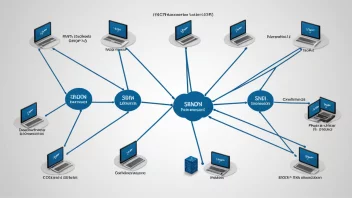In the ever-evolving landscape of software development, third-party libraries have become essential tools that can enhance productivity and streamline processes. However, working with these libraries requires a strategic approach to ensure that they integrate smoothly into your projects. This article outlines best practices for effectively utilizing third-party libraries in your software development endeavors.
Understand the Library's Purpose
Before integrating a third-party library, it is crucial to understand what problem it solves and how it fits into your project. Consider the following:
- Functionality: Does the library provide the features you need?
- Compatibility: Is it compatible with your existing tech stack?
- Documentation: Is the library well-documented, making it easy to implement?
Evaluate the Library's Popularity and Community Support
When selecting a third-party library, assessing its popularity can provide insights into its reliability and longevity. Look for:
- GitHub Stars: A higher number of stars indicates a larger user base.
- Issues and Pull Requests: Review how actively the library is maintained by its contributors.
- Community Forums: Check for user forums or Stack Overflow discussions for support and resources.
Check for Security Vulnerabilities
Security should be a top priority when working with third-party libraries. To ensure safety:
- Review Security Reports: Check for any known vulnerabilities in the library.
- Use Dependency Scanners: Tools like Snyk or npm audit can help identify security risks.
- Update Regularly: Keep libraries updated to the latest versions to mitigate security issues.
Maintain Code Quality and Consistency
Integrating third-party libraries into your project can impact code quality. To maintain high standards:
- Code Reviews: Conduct thorough code reviews to ensure seamless integration.
- Consistent Coding Standards: Follow consistent coding practices to avoid confusion.
- Minimal Use: Use libraries only when necessary to prevent bloating your project.
Document Your Library Usage
Proper documentation is vital for your team and future developers. Ensure to:
- Comment Your Code: Clearly explain why you chose a specific library and how to use it.
- Maintain a Change Log: Document updates or changes made to library configurations.
- Provide Examples: Include examples of how to implement the library in your codebase.
In conclusion, leveraging third-party libraries can significantly enhance your software development process. By understanding the purpose of the library, evaluating its popularity, prioritizing security, maintaining code quality, and documenting usage, you can ensure a smoother integration and more successful project outcomes.






